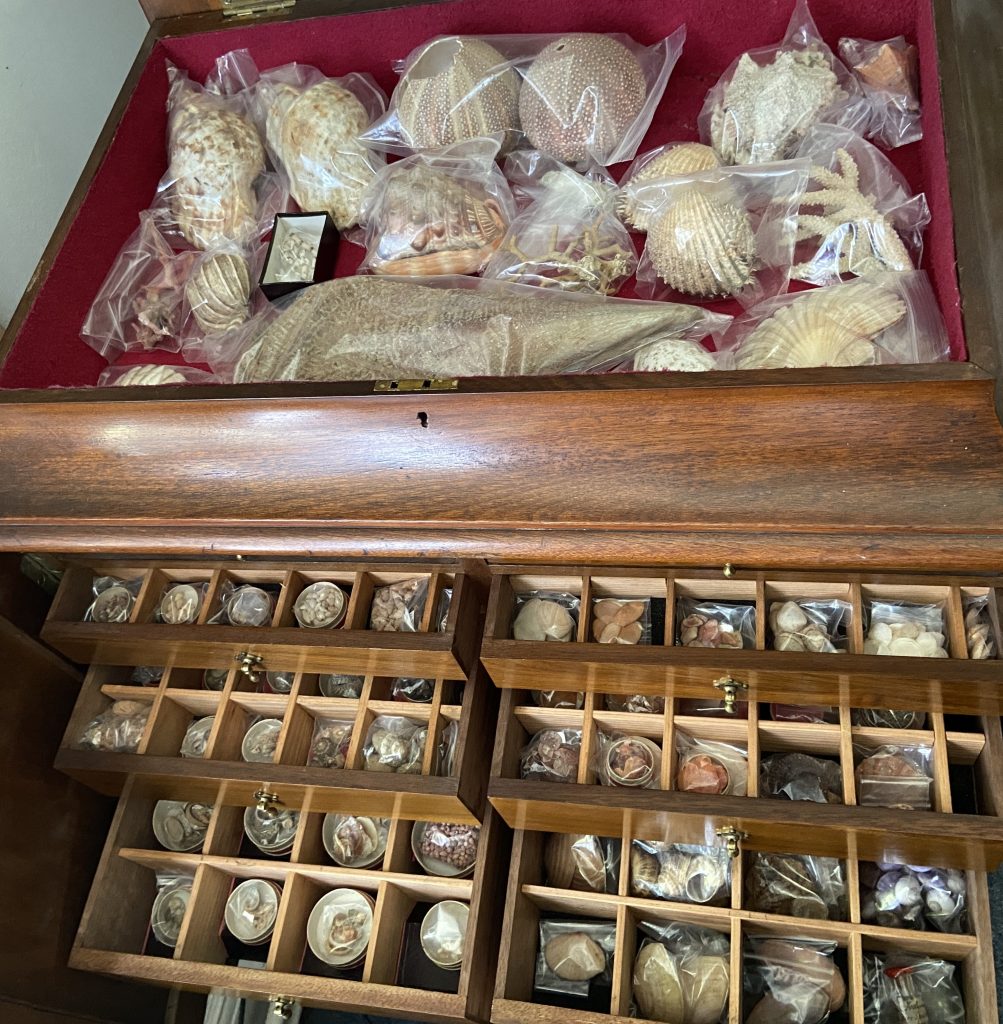
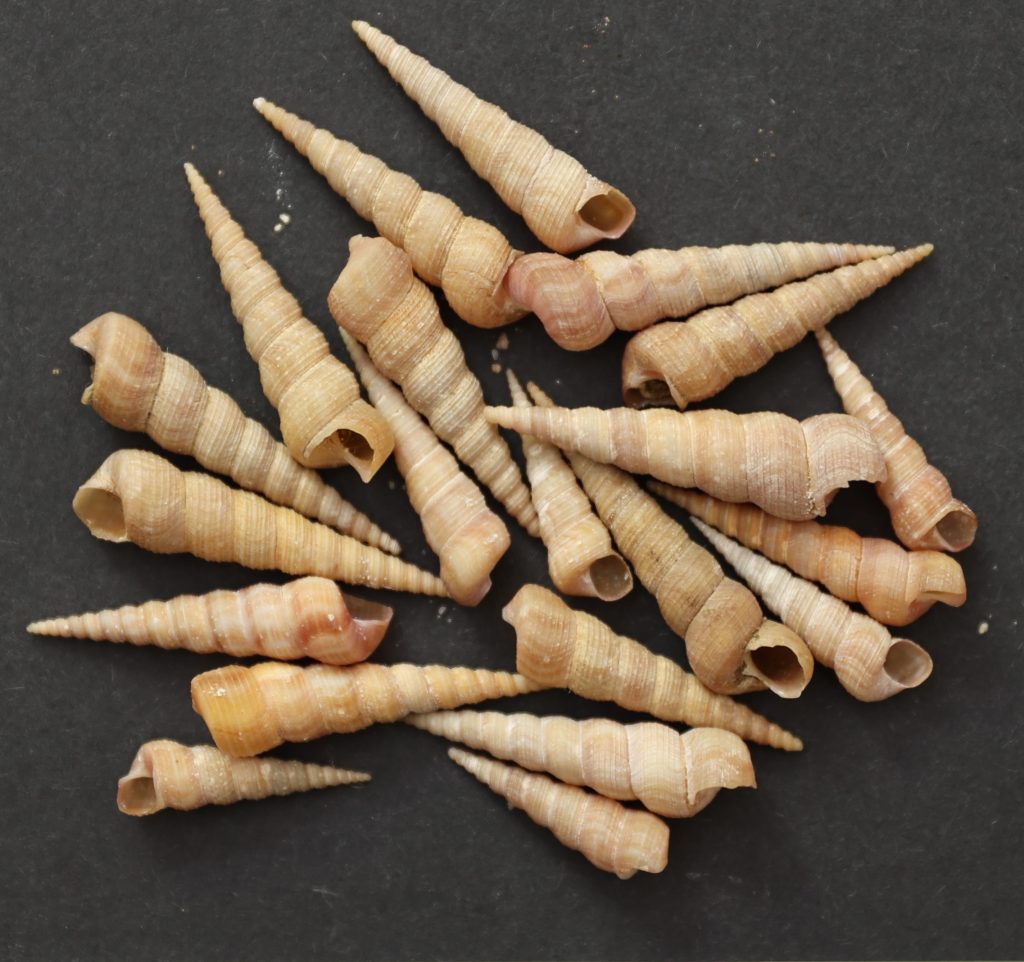
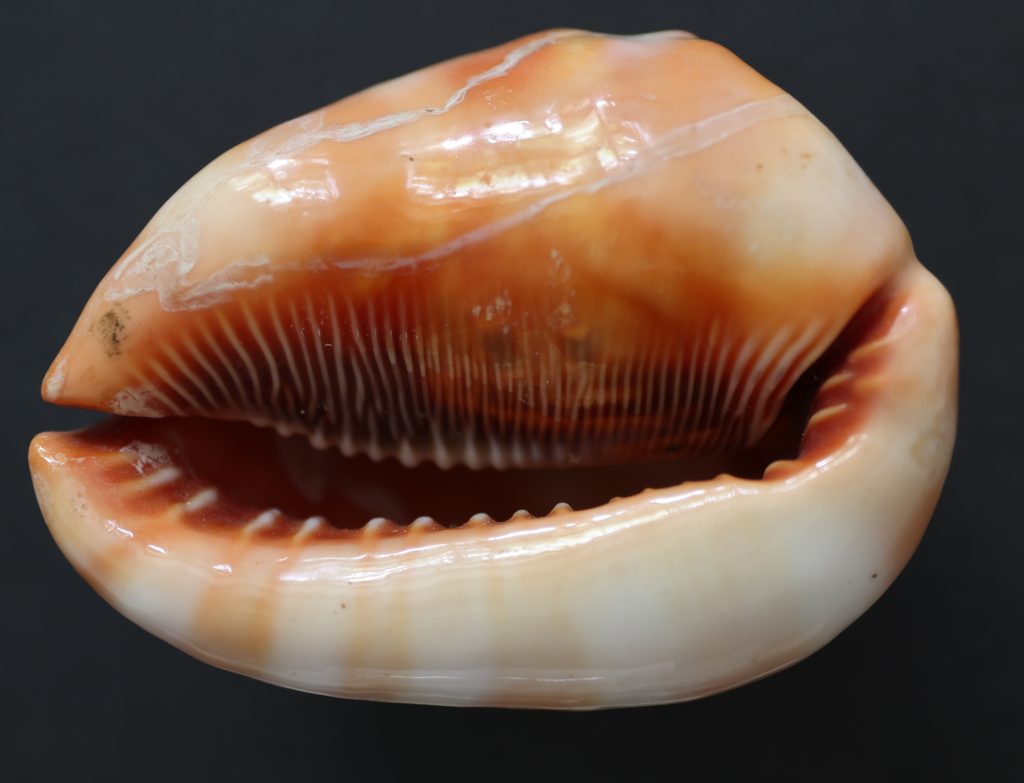
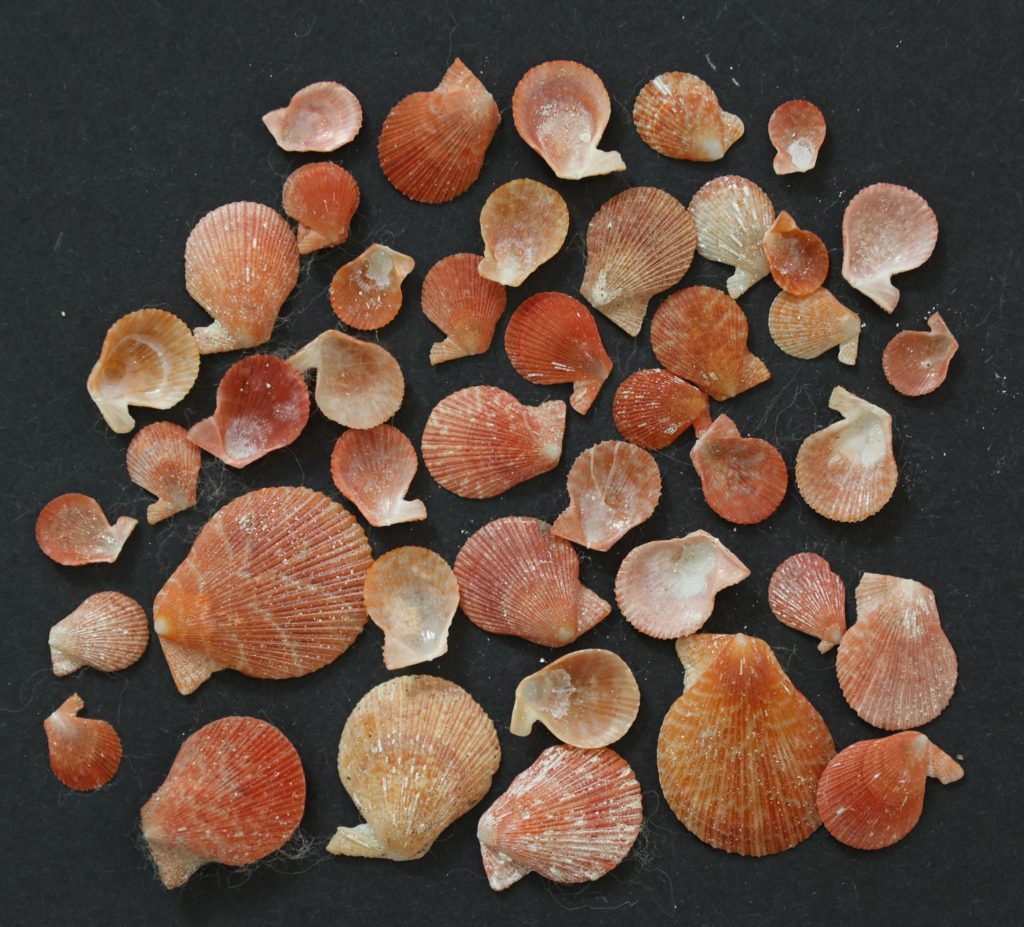
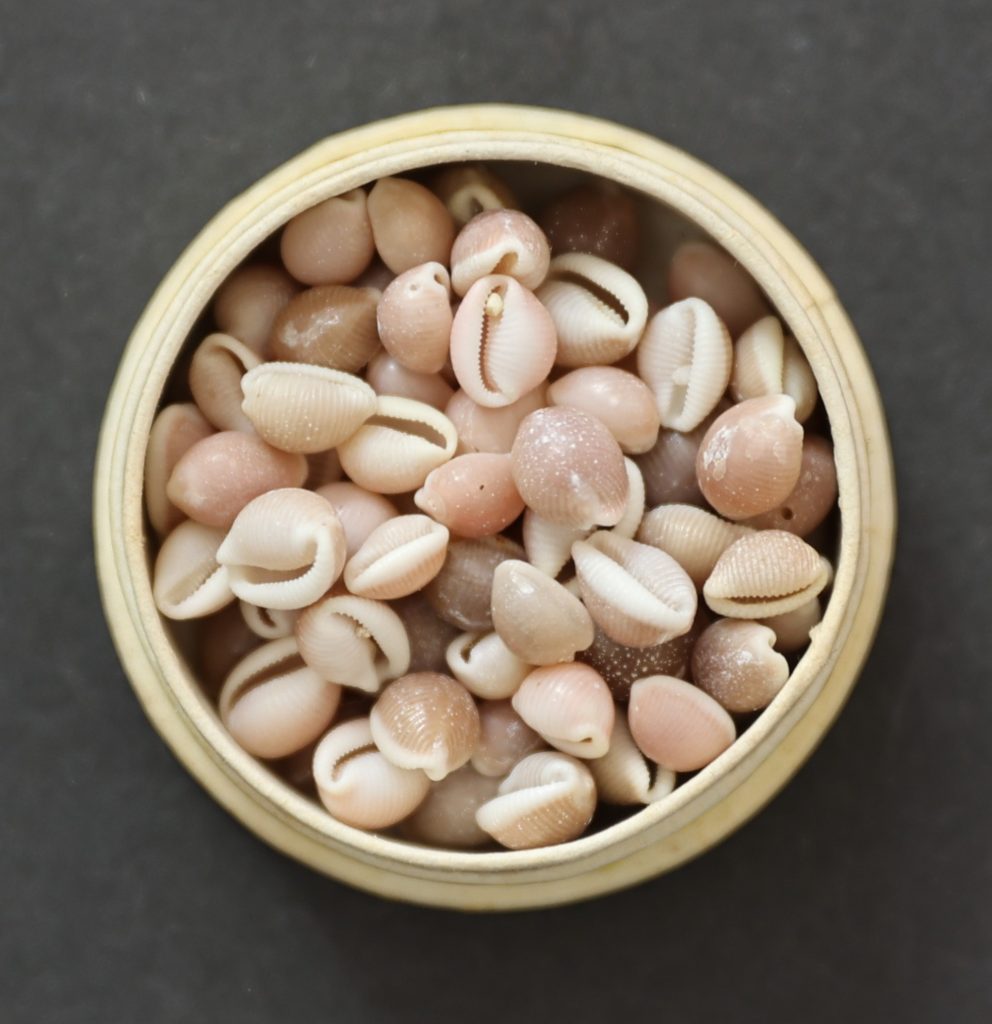
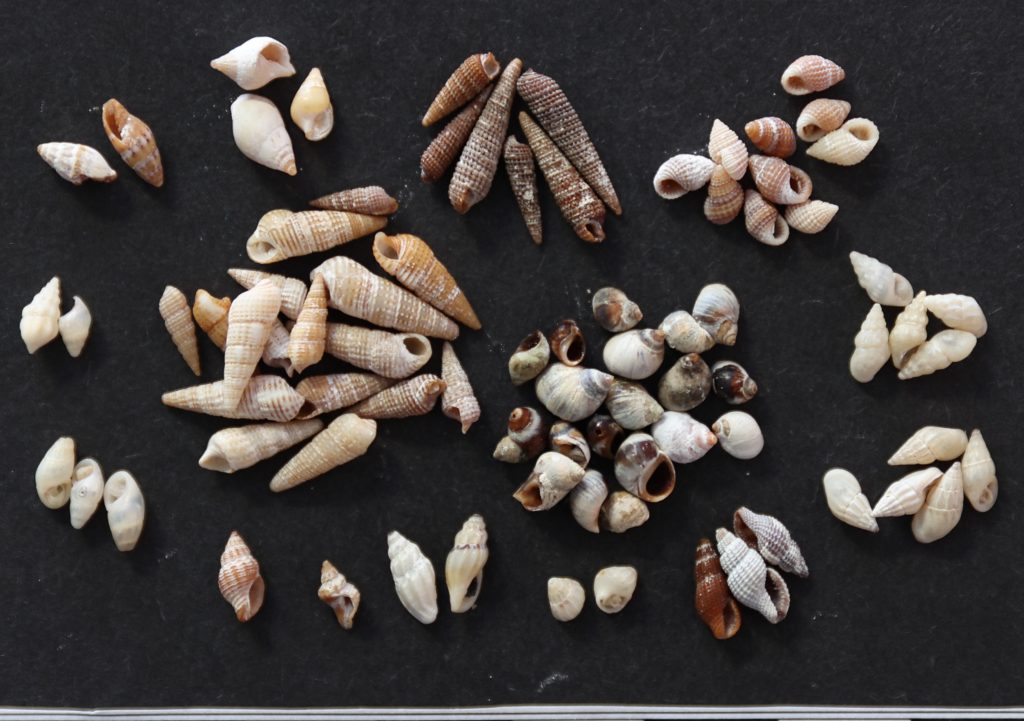
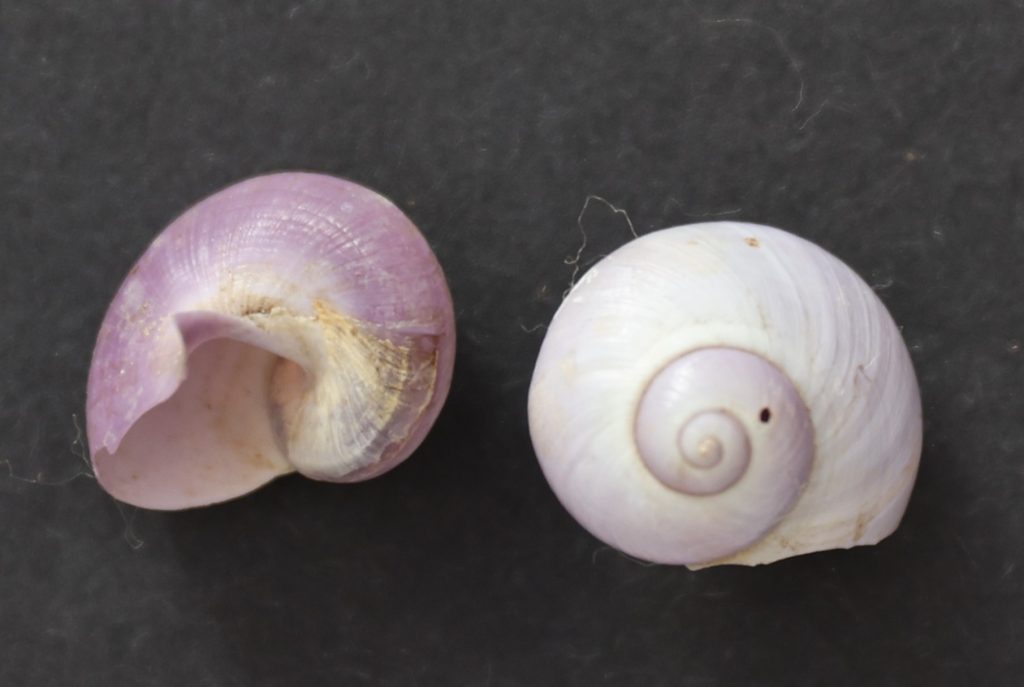
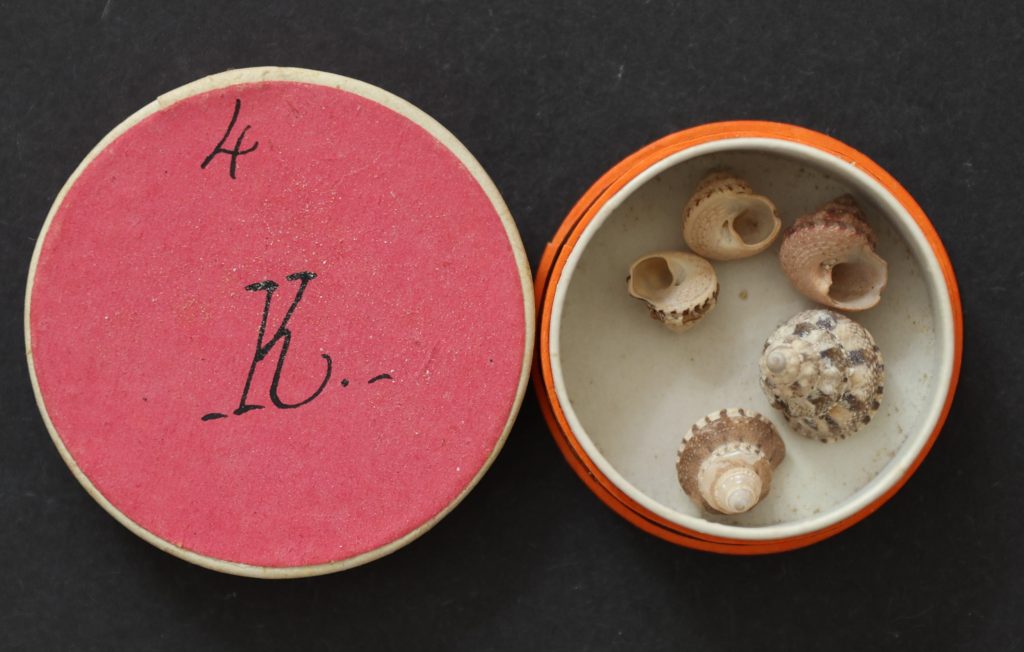
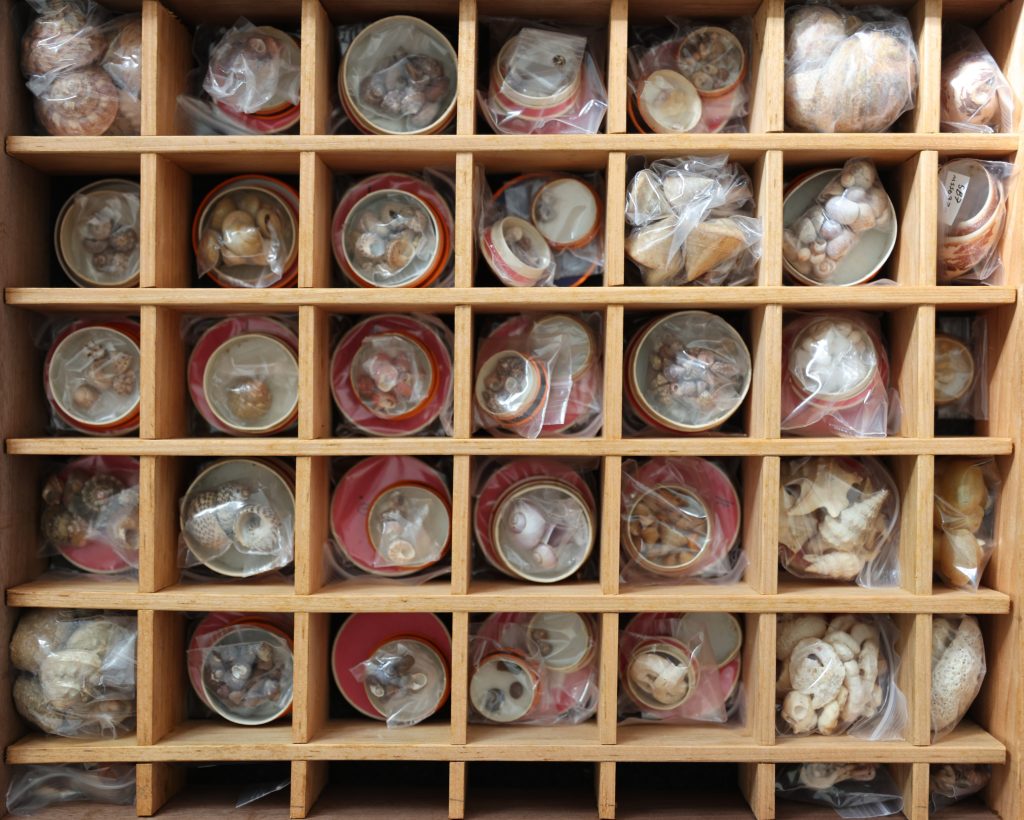
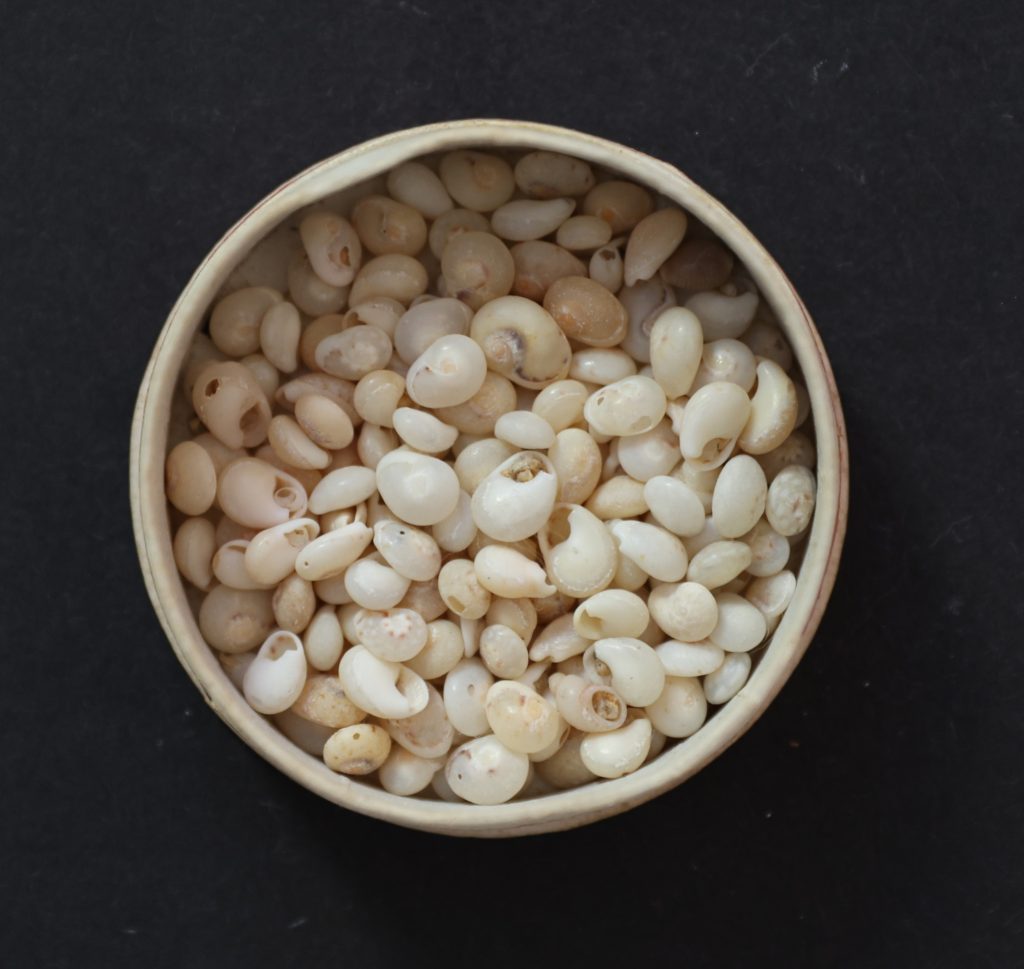
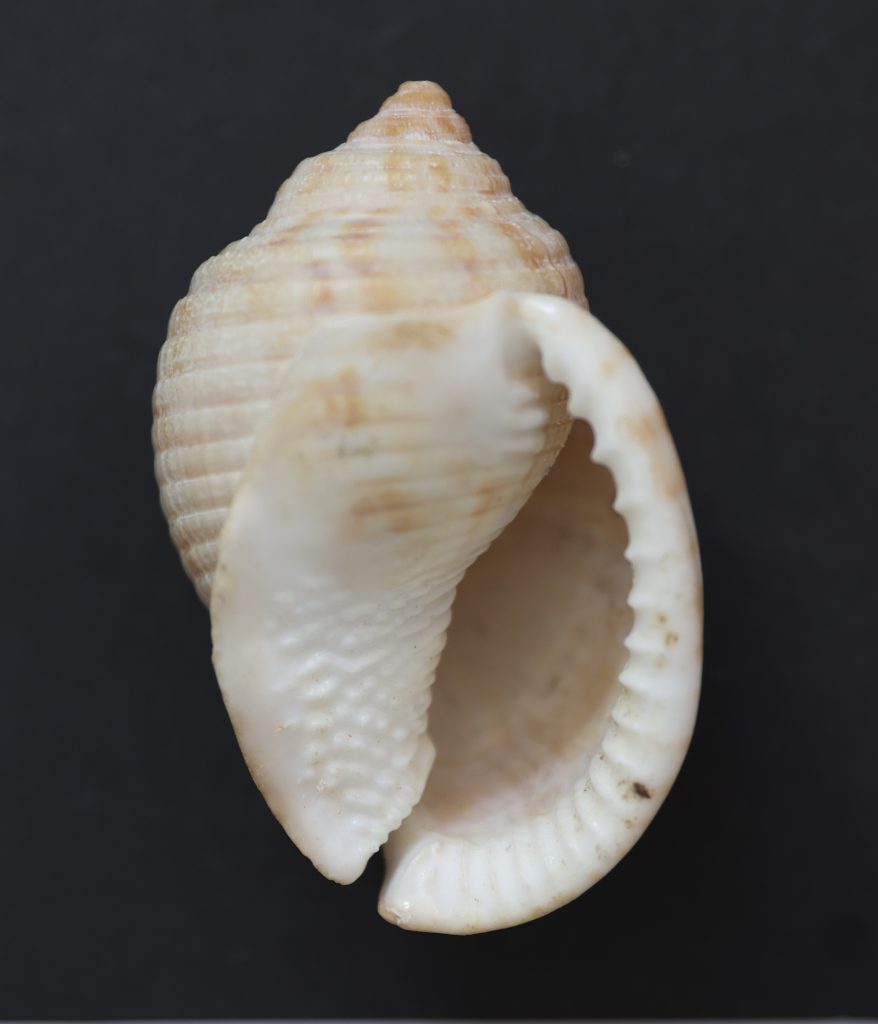
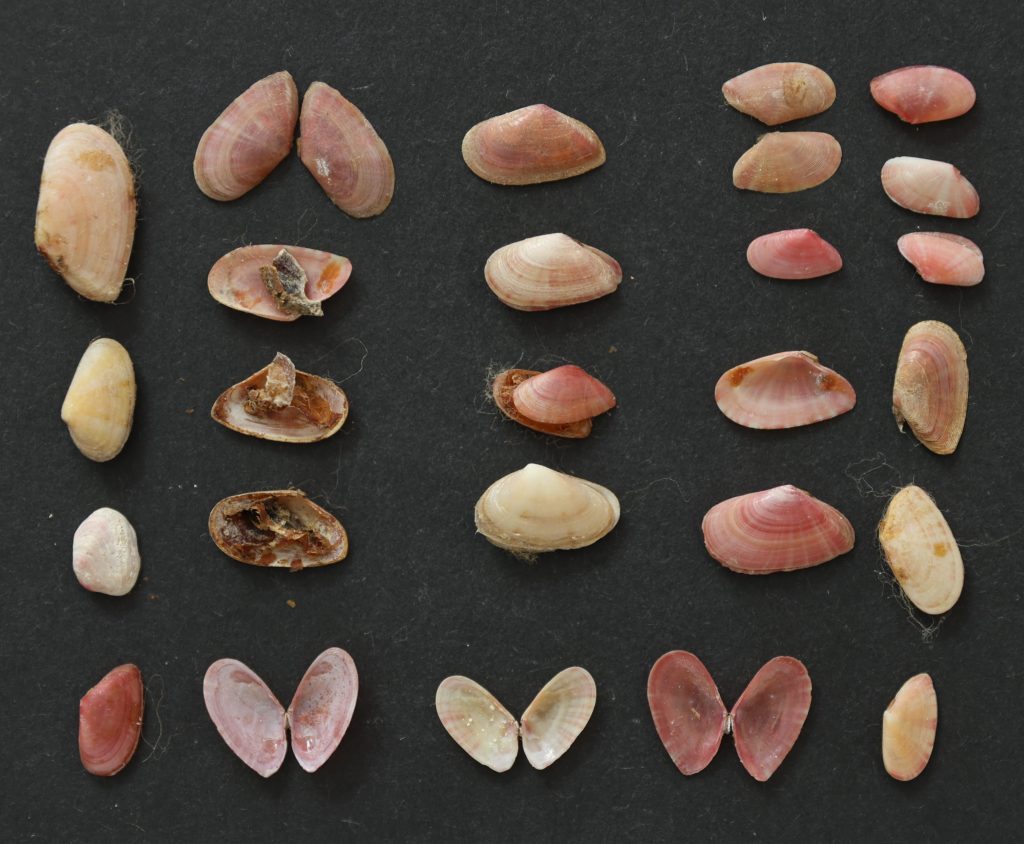
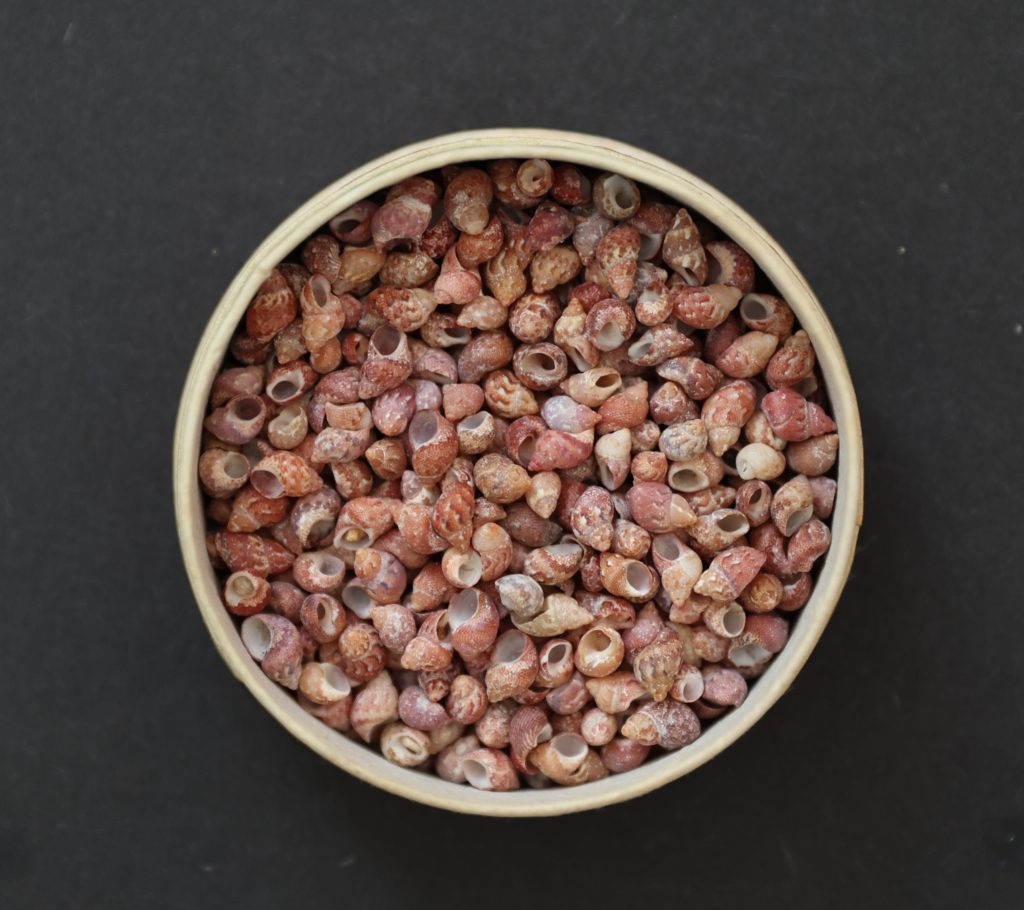

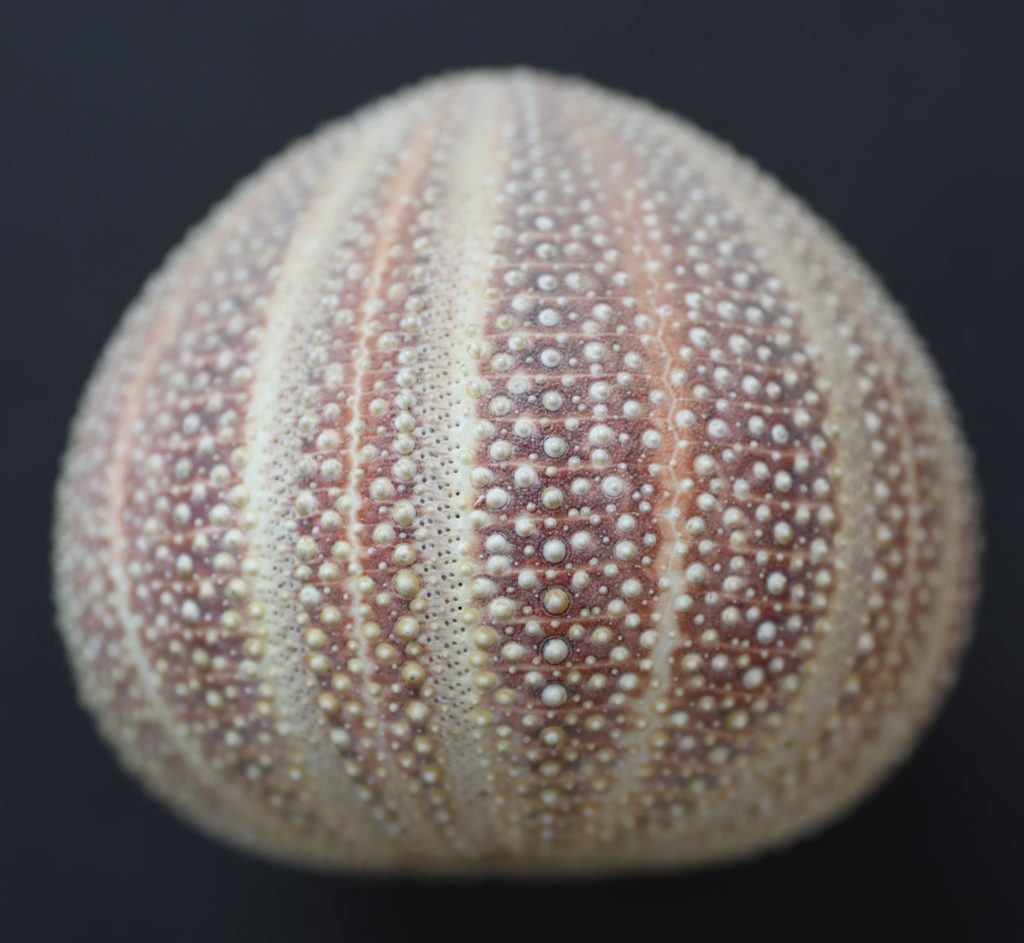
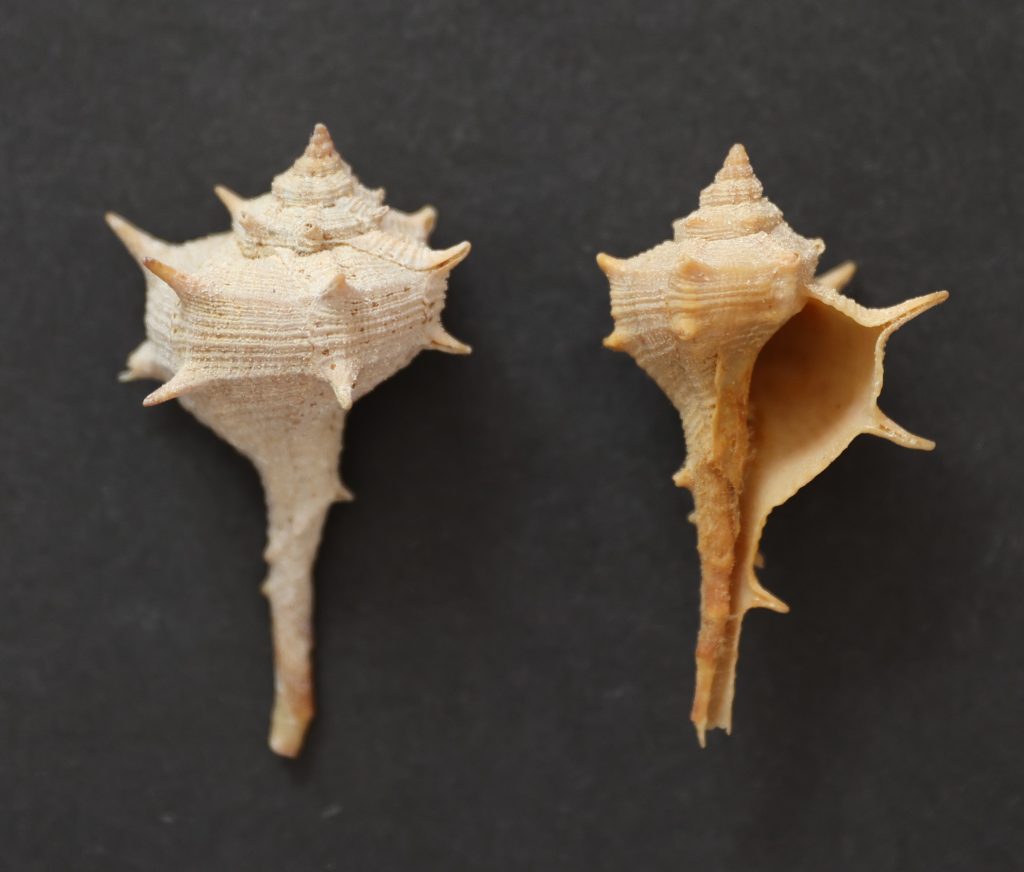
Provenance of the collection
Mary Somerville’s shell collection which was given to the college in 2018 by her family, the Fairfax-Lucys. It is understood to be her personal collection, which she started accumulating as a girl, collecting ‘native shells’ from the shores around her home in Burntisland. As such, the collection is of great interest to conchologists not only for its association with Mary Somerville, but for its age, as it could be a particularly early collection, potentially dating from the late 18th century.
In 2024, under the guidance of Mark Carnall, Collections Manager, Life Collections at the Oxford University Museum of Natural History, a 12-week project to photograph, catalogue and conserve the collection took place. The collection is housed in a bespoke wooden cabinet and Will Adams, the project cataloguer, photographed the shells and cabinet as received, and then began the work of recording all the contents in detail – specimens, labels, containers, even papers used to pack the larger shells for transit.
Information provided by labels and on original cardboard containers was recorded and the order of the specimens within the drawers was preserved. Once photographed, measured and listed, the specimens were then placed in zip-lock bags or capsules (for the tiniest shells), and returned to the appropriate compartment in drawers which had been lined with conservation foam.
The study of the cabinet contents revealed it to contain a variety of other specimens in addition to shells, including minerals, fossils and spiders, and it is now more accurately described as a ‘natural history collection’. In total, 234 unique species were identified, and the collection was found to contain not just ‘native shells’, but a significant number from the Mediterranean. This would suggest collection over many years. A set of numbered geological specimens is one indicator that some items could have been acquired via traders or sharing; a list of the minerals was found separately among Mary Somerville’s papers, which supports the Somerville provenance.
Using the Collection
A report about the collection can be found here, as well as a listing of the contents of the collection here. To consult the collection, please contact the college archivist.
Limitations on use
The college holds the copyright of all images and reports pertaining to the collection. Permission to reproduce images or text created by the college should be sought from the archivist.